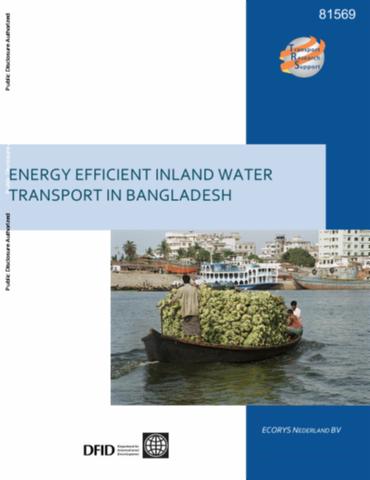Resource information
IWT is more energy efficient that modes like road or rail. The bigger capacity of IWT units means that the sector is able to ship more tons per kilometer per unit of fuel than what is possible with other modes. This benefits the climate and makes the sector relatively cost-efficient. Even so, few countries fully exploit the potential benefits of IWT and in many countries the share of road transport is increasing at the cost of IWT. There are various possible reasons for this trend. Among the main reasons given by shippers to avoid IWT are advantages of road transport such as speed of delivery and flexibility, limitations imposed by IWT infrastructure (water levels, bridge clearances, port access) and underdeveloped intermodal facilities (transshipment from IWT to truck for pre- and end-haulage). For shippers these arguments are more important than the potential reduction of transport costs and CO2 emissions. Chapter two compares the global energy-efficiency of IWT with that of other transport modes. It also discusses the reasons for differences between modes and the implications of each for CO2 emissions. Chapter three deal with the varying energy-performance of IWT vessels in various regions in the world. Chapter four explores several energy efficiency benchmarking methods. The conclusions of part A are presented in chapter five.


